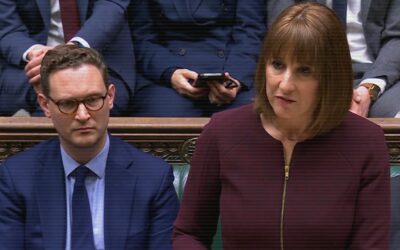Sweet Deception: £4.4bn tax evasion leaves a sour taste for HMRC
- Tax evasion growing amongst small businesses, but HMRC lacks an effective strategic response
- Estimated £4.4billion lost to tax evasion by small businesses, although HMRC admit this could be erroneous.
- Very few cases of director disqualifications for phoenixism, despite 15% of tax debt attributed to the practice
- NAO calls on HMRC to foster collaboration with other parts of government to develop a shared understanding of the drivers of tax evasion
In its latest report, the National Audit Office (NAO) examines tax evasion in the retail sector, picking up on previous research by HMRC that found higher risk profiles in certain retail sectors including sweet shops and takeaways. Their report highlights that 81% of tax losses due to evasion related to small businesses in 2022-23, a significant jump from 66% in the previous year. This shift underlines the fact that, while much attention has been focused on the tax affairs of large multinational corporations, small businesses that are now responsible for the lion’s share of the tax gap.
A sticky situation: HMRC’s strategic shortcomings
The NAO report concludes that, despite the scale of the problem, HMRC lacks a cohesive strategy to address tax evasion specifically. Instead, it focuses on broad “strategic risks of non-compliance”, an approach that the NAO suggests may be insufficient to tackle two particularly pervasive forms of evasion; phoenixism and electronic sales suppression (ESS).
The phoenix rising: A £500 million problem
Phoenixism, where companies artificially declare insolvency only to rise again under a new name, is estimated to have cost £500 million in lost tax revenue in 2022-23 alone and accounted for 10-15% of total tax losses reported in HMRC’s annual accounts between 2017-18 and 2019-20[i].
The NAO notes that HMRC’s strategy gives “limited consideration to the important role of the Insolvency Service and private sector insolvency practitioners” in addressing this issue. Figures relating to director disqualifications highlight the important role played by other institutions in addressing tax evasion. Of the 6,274 directors disqualified by The Insolvency Service between 2018-19 and 2023-24, only 7 directors were disqualified for phoenixism. This is an important power which must be used effectively as part of a cross-institutional approach to reducing the use of insolvency to evade tax.
Cooking the books: sales suppression on the high street
Electronic sales suppression (ESS) involves manipulating sales records to under-report income. It was estimated to cost at least £450 million in lost tax revenue in 2018-19[ii]. Despite introducing a strategy to combat this in 2019, HMRC has not updated its approach or reassessed the scale of losses, despite the proliferation of more sophisticated evasion methods.
New powers, unused tools
HMRC has been granted a number of additional powers in recent years to combat both phoenixism and ESS. Their apparent reluctance to use them is concerning.
Amongst these is the 2022 civil enforcement and data collection powers to tackle ESS. HMRC has yet to issue any penalties under these powers but told the NAO that the “powers have generated publicity which it believes has had a deterrent effect.” TaxWatch is sceptical of such claims and argues that a deterrent that is not used has little or no deterrent effect. HMRC are making unsubstantiated claims that the publicity of the powers deters activity, but if there’s no follow through this risks undermining Parliament’s intent.
The NAO report calls on HMRC to evaluate the use of investigatory and enforcement powers, identifying barriers and gaps that limit effective action. TaxWatch is very much in agreement with this and would encourage HMRC to conduct such evaluations.
A call for collaboration
The NAO emphasizes that tackling tax evasion requires a joined-up approach. It argues that HMRC must work more closely with other government departments, particularly Companies House, to close loopholes and strengthen checks on company registrations.
Whilst recent changes, such as new powers granted to Companies House in March 2024[iii], are steps in the right direction, the NAO warns that full implementation of these measures could take years, with some key areas of risk, such as verifying directors’ identities and business addresses, still not addressed.
Conclusion
As HMRC grapples with finite resources and an ever-evolving landscape of tax evasion tactics, the need for a more targeted, strategic approach becomes increasingly clear. The shift in the tax gap from large corporations to small businesses demands a recalibration of efforts and a more efficient use of the tools at HMRC’s disposal.
Moving forward, it’s crucial that HMRC leverages its full range of powers and works collaboratively across government to ensure that everyone, from sweet shops to multinational corporations, pays their fair share of tax.
[i] HMRC Annual Report and Accounts, P44
[ii] According to the NAO report, HMRC plans to update its estimate of the scale of tax losses due to ESS in December 2024.
[iii] These include the power to check information submitted to Companies House, request evidence and remove inaccurate information.



